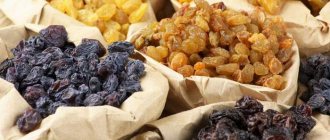Meat, despite its high nutritional and taste qualities, is a very difficult product for the body. And the point here is not so much the complexity of its structure - it contains a variety of fibers and fabrics. Meat is also quite rich in substances of a wide variety of nature, for the digestion of which the body needs to produce a lot of digestive enzymes and specific reagents.
Let's look at how meat is digested throughout the human digestive tract.
In the oral cavity
Whole meat products - we're not talking about sausage yet - pass through practically without any chemical treatment until the stomach: salivary enzymes do not affect almost any component of the piece of meat.
In the human oral cavity, meat is only chewed and crushed to give it a more convenient form for the body, and is also mixed with saliva to form a soft and fairly liquid bolus of food that will pass more easily through the esophagus. But already in the stomach, all meat fibers begin to be actively processed by gastric juice.
Digestion of meat in the stomach
The main “framework” of all meat fibers is made up of large protein molecules. And it is for their breakdown that the stomach has a special set of enzymes. The basis of this set is pepsin and chymosin - the most effective enzymes for digesting meat, working in conditions of high acidity of the stomach. Provided that the stomach is not filled to capacity and, if possible, with only meat, they cope very effectively with a large amount of protein.
We can immediately conclude that adherents of separate nutrition are very right here. If, in addition to meat, a certain amount of other products enters the stomach, then these satellites are processed first. Simply because they are generally easier to process. But complete digestion of meat in the stomach does not have time to occur, and it passes further into the intestines not quite in a finished form.
The same can be said about water. When it gets into the stomach, it reflexively tries to push it further into the intestines, and many particles of unprepared meat get there with it. Therefore, it is advisable to drink either before meals or some time after it.
But even under optimal conditions, a piece of meat with a large amount of fiber, special layers and films is not completely digested in the stomach. Even though it stays there longer than any other product. And a portion of meat enters the intestines in a semi-digested form. But the gut itself is ready for this and meets it fully armed.
Composition and properties
Meat is rich in proteins, fats, carbohydrates, cholesterol and essential amino acids. This product contains microelements such as iron, sodium, zinc, magnesium. Meat foods also contain vitamins of groups A, B, E, D, which regulate the functions of neurotransmitters, thereby guaranteeing performance and activity for humans. These substances are needed for the proper functioning of the body.
Meat contains proteins foreign to the human body. When consuming this product in large quantities, the natural intestinal microflora is disrupted.
Animal products can and should be included in your diet. Only they should be fresh and in moderation. The benefits of meat depend on the way it is processed. Nutritionists do not recommend eating fried and smoked meat; it is better to bake or boil the product. It is recommended to eat any meat product simultaneously with vegetables or porridge, due to which the absorption of the product will be complete.
In the intestines
The intestines have their own enzymes, adapted to the specific local conditions and no less effectively coping with the task of digesting meat proteins. These are trypsin, erepsin, chymotrypsin, steapsin, which work with the proteins and fats of the meat lump.
At the same time, a portion of meat should already be absorbed in the intestines, and therefore all the enzymes here should quickly complete the work of digesting meat, which began in the stomach. Both the pancreas and the intestines themselves produce enzymes, focusing on signals from the stomach about the quantity and quality of meat entering it.
And the breakdown products of all the structural components of meat - amino acids, vitamins, fatty acids, mineral components - are absorbed by the intestines and distributed in the blood throughout the body.
What to eat with what?
Theories of product incompatibility
Every now and then we hear about the benefits of various diets, but over time they lose popularity and only the principle of separate nutrition, declaring some types of foods incompatible, is always relevant.
The creator of the modern separate nutrition system, American nutritionist and naturopath Herbert McGolfin Shelton (1895-1985), argued that the simultaneous consumption of proteins, fats and carbohydrates complicates the digestion process, requiring the production of different enzymes, and only a certain combination of products allows food to be more easily digested, and leads to to more efficient absorption of nutrients.
The first mentions of “antipodean products” are found in Indian Ayurveda. It was not for nothing that Mahatma Gandhi invited Shelton to visit India.
Both traditional Indian medicine and Shelton's system agree that eating incompatible foods leads to digestive problems: gas, bloating, pain, nausea and fatigue, which can become precursors to more serious diseases.
Incompatible: meat and fruit/meat and potatoes
One of the classic examples of incompatibility both in Ayurveda and in Shelton’s teachings is meat and fruits. If in Ayurveda the recommendation not to snack on meat with fruits explains that an imbalance of six tastes can extinguish a person’s digestive fire, then Shelton’s explanation is more scientific.
It is stated that glucose and fructose contained in fruits are absorbed in the body in a few minutes, while proteins and fats contained in meat take much longer to digest. Therefore, if you eat fruit immediately after meat, then the sugars, waiting for their turn to be digested, will linger in the stomach for a long time and will “rot,” “ferment” and “become food for pathogenic yeast fungi.”
It is also claimed that combining meat with starchy foods will lead to “petrification” of the meat in the intestines due to the fact that the enzymes responsible for digesting meat proteins and starch “neutralize” each other’s action. As a result, the digestion of both starch and protein slows down - they “get stuck in the digestive organs” and cause gas formation, belching and other unpleasant symptoms.
Fortunately, such horrors do not actually happen in our digestive system. First of all, because almost all food products are a combination of proteins, simple carbohydrates, starch and fats.
“pure protein” (and even then, it contains only 82.4% protein, and the rest is carbohydrates and fats).
“pure carbohydrates” (at least 98% mono- and disaccharides) except refined sugar, cane sugar and honey in our diet.
“Pure fats” are only vegetable oils (99% fat content). In other products, the main biological molecules are presented in various combinations.
Moreover, explanations of the benefits of separate nutrition and stories about the horrors of combining incompatible foods do not correspond to knowledge about the biochemical processes of digestion. Don't underestimate our digestive system's ability to multitask.
Fact 1. Food cannot “rot” in the stomach
Rotting is the destruction of organic matter (food) by bacteria or fungi. The environment inside the stomach is very acidic - more acidic than vinegar and undiluted lemon juice. Such a high acid content makes the stomach an extremely unfriendly place for microorganisms responsible for rotting processes. To put it simply, yeast simply cannot survive in the human stomach, and of the bacteria, only Helicobacter pylori feels safe there. This bacterium, of course, is not good, its toxins contribute to the destruction of the walls of the stomach, and it can cause gastritis or even peptic ulcers, but it has nothing to do with the rotting of food in the stomach. A person with any nutritional system can become infected with it. Moreover, there is not a single microorganism in our digestive system that could cause rotting or fermentation of the fragments of food we eat - no matter how many hours have passed since a business lunch or a holiday dinner. Even if you ate foods that are not compatible from the point of view of the principles of Ayurveda or Shelton.
Fact 2. The level of acidity in the stomach does not depend on food
According to the principles of separate consumption of protein and carbohydrate foods, starch-containing foods reduce stomach acidity. Low acidity negatively affects the activity of the enzyme pepsin, which is involved in the breakdown of proteins. This argument is also erroneous from the point of view of biochemical processes.
In fact, the function of the stomach is not so much to break down food as to grind it. It is necessary in order to increase the area of its contact with various digestive enzymes when food enters the small intestine. Digestion of proteins occurs predominantly in the small intestine, and pepsin produced in the stomach is involved in the absorption of 10% of proteins. Therefore, people who had parts of their stomach removed for medical reasons did not lose the ability to digest protein and absorb its building blocks - amino acids.
Indeed, pepsin needs an acidic environment to function properly, but starch neutralizes the acidity of gastric juice no more or less than any other food. The acidity level of the stomach is controlled by the cells that line its surface. These cells secrete acidic gastric juice during the digestion process.
The maximum acidity of gastric juice is observed when the stomach is empty. The food entering it reduces acidity using various biochemical mechanisms, but the environment in a full stomach still remains acidic. By the way, this explains why in people suffering from gastritis, ulcers or simply increased stomach acidity, the feeling of hunger is accompanied by unpleasant or painful sensations, and after eating they go away.
In the small intestine, an acidic environment is no longer needed - pepsin has done its job and delegated its digestion responsibilities to other enzymes, which are already optimized to work in the weakly alkaline environment of the small intestine.
That is, our body is able to independently maintain different levels of acidity in each part of the digestive system. This is quite logical - enzymes working in each of these areas need their own level of acidity, which is provided by the cells of the stomach, pancreas and other organs. Products cannot disrupt the mechanism of this regulation.
Fact 3. Different enzymes do not interfere with each other
The digestion of nutrients involves various enzymes that are produced by the body simultaneously, regardless of what a person eats at a particular moment. Even if he eats pure sugar (cotton candy or candy), the body still initiates the process of secreting enzymes responsible for digesting proteins and fats.
As food crushed in the stomach moves through the small intestine, appropriate enzymes break down proteins, starches and fats into building blocks independently of each other. The resulting building blocks are absorbed by the intestinal walls and also do not interfere with each other - the adsorption of amino acids, sugars and fatty acids is controlled by intestinal cell receptors that recognize a strictly defined type of building block. Simply put, proteins and carbohydrates in the intestines are absorbed by different types of cells, which eliminates the possibility of competition for the absorption of meat and starch-containing products.
Therefore, such dishes as denied by Ayurveda and Shelton, such as a sandwich or chicken with pineapple, are not capable of ruining the functioning of our digestive system. Provided that we observe moderation in their consumption and do not forget to add dietary fiber to the diet.
Fact 4. Intestinal gas is not a sign of poor digestion.
Flatulence is not caused by the combination of meat and carbohydrates. Intestinal gases may mean that a person has simply gone too far with the same dietary fiber that we can “feed” the body by consuming vegetables, fruits, bran or durum wheat pasta.
The main component of dietary fiber is cellulose. The human digestive organs do not produce enzymes that can break down fiber. However, some microorganisms that live in the large intestine (the part of the digestive system in which undigested food is prepared to be eliminated from the body) can break down fiber. That is, intestinal gases are often a natural, albeit uncomfortable process of microorganisms digesting fiber.
To avoid this discomfort, it is recommended to limit fiber intake to 25-30 grams per day. People who eat only plant foods in their diet are more likely to suffer from flatulence.
So to mix or not?
Most often it is a matter of taste. Many foods are considered incompatible in some cultures, but perfectly acceptable in others. In our latitudes, many consider kefir and cucumbers to be a monstrous combination, but the number of sites with recipes for dietary cucumber-kefir soup is impossible to count.
In Orthodox Judaism, there is a ban on preparing dishes that combine milk and meat (“do not boil a kid in its mother’s milk”), and for some Turkic-speaking peoples of Asia, milk soups with meat are part of the national cuisine.
If we talk about real incompatibility of products, then it should be mentioned that a piece of smoked sausage is incompatible with mayonnaise, and a piece of cake with sweet tea. In the first case, we take in excess amounts of fat at one meal, and in the second, carbohydrates.
You should not combine foods that have the same high or equally low glycemic index: the rate of absorption of the product compared to the rate of absorption of glucose. The combination of foods with a high glycemic index will accelerate the entry of simple carbohydrates into the blood and, at a minimum, will contribute to excess weight gain or increase the risk of developing type II diabetes. For example, it is better to avoid many people's favorite morning meal - cereal with yogurt. Both foods have a high glycemic index and consuming them together can cause a significant increase in blood sugar. On the other hand, the desire to avoid carbohydrates in general and regularly eat a salad with greens and tuna, seasoned with vegetable oil, although it will be moderately high in calories (fats, both animal and vegetable, are the most high-calorie part of our diet), will not provide the carbohydrates necessary to maintain many metabolic processes, and can also cause poor health.
In some cases, problems with the joint consumption of certain types of foods can be explained by diseases, both genetically inherited and acquired. That is, if you suspect that you are getting worse from consuming certain food groups together, you should consult your doctor.
If you mix it, it's reasonable
In fact, there is nothing wrong with the very idea of separate meals (unlike some other diets). Moreover, some recommendations for choosing what to eat are quite reasonable.
For example, limiting the consumption of added sugar, reducing the proportion of sausages, smoked meats, canned food, margarine and mayonnaise in the diet, eliminating stale and limp vegetables and fruits from the diet.
The positive aspects of separate nutrition include the fact that even in the absence of rational explanations for its action from a scientific point of view, a person at least thinks about how much, what and when it is better to eat. This normalizes eating behavior and reduces the risk of overeating.
If someone likes to eat separately, please, this system is not dangerous to health. Another question is whether it makes sense. After all, human physiology is configured to consume mixed foods, and enzymes work all at once, regardless of what we eat.
How to mix The products presented below are also useful individually. But if you combine them, the value multiplies several times.
Broccoli + Tomato Tomato contains the antioxidant lycopene, and broccoli contains the enzyme sulforaphane. Together they are 10 times more effective in helping the immune system recognize and neutralize precancerous cells. Raw fish + Wasabi Wasabi is a constant companion for sushi for good reason. This Japanese variety of horseradish contains enzymes needed to digest raw fish. Carrots + Olive oil / cream Vitamin A, the most important antioxidant that carrots are rich in, is fat soluble. Oil helps to completely absorb it. Meat + Greens Vitamin C, which greens are rich in (especially parsley), helps to absorb iron from meat and offal to the maximum. The ideal side dish for meat is a salad of finely chopped greens, seasoned with lemon juice. Coffee + Toast Together, these products are the perfect post-workout snack. The combination of caffeine and fast carbohydrates helps muscles recover and retain up to 66% of glycogen (the main fuel for muscles) the next day.
Just drink the melon with cold water, kefir, yogurt or alcohol - and you will get the right laxative.
Cucumber and tomato salad is absolutely useless. This conclusion was made by Academician A. Pokrovsky during his research; he saw that the combination of cucumbers and tomatoes leads to the destruction of vitamin C in the salad.
Published: February 7, 2022
Digestion time
But even with such coordinated work, ideal digestion of meat does not occur. This is due to the presence in it of a large number of difficult-to-digest parts - tendons, cartilage, skin.
The remains of these components, not being completely digested and entering the intestines, can begin to rot there, which leads to a wide variety of unpleasant consequences.
The digestion time of meat in the human body extends over time by 6-10 hours, depending on the amount and degree of heat treatment of the meat. For comparison, apples and tangerines are absorbed by the body in 2-3 hours. But at the same time, fruits cannot boast of such a wealth of components necessary for the body.
As a result, meat is a wonderful example of the fact that culture and accuracy in eating is an important guarantee of high-quality and as complete digestion of food as possible. And the smarter we eat, the fewer problems and more benefits we get from food.










